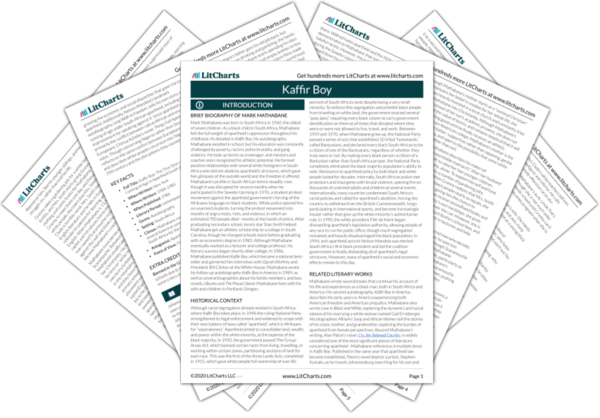LitCharts assigns a color and icon to each theme in Kaffir Boy, which you can use to track the themes throughout the work.
Apartheid’s Structural Oppression
Tribal Identity vs. Modern Education
Anger, Hatred, and Violence
Suffering, Survival, and Trauma
